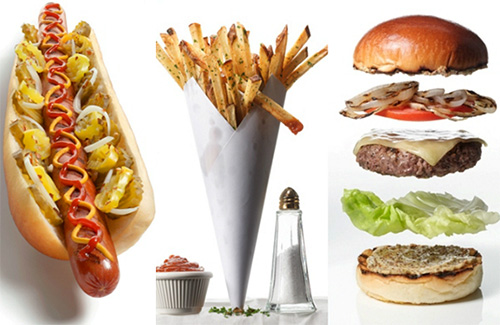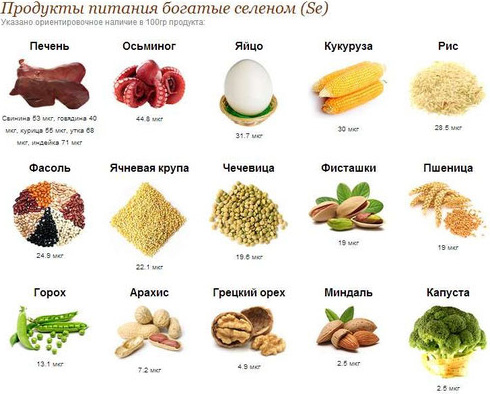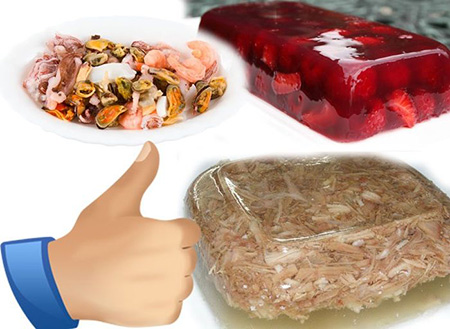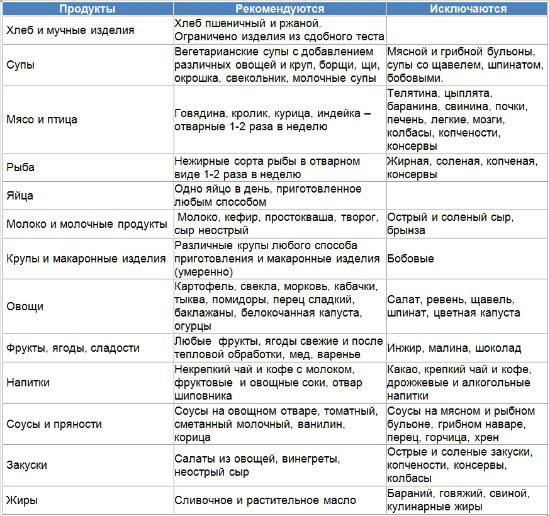Diet for joint pain: what not to eat with joint diseases
When joints hurt, is it necessary to follow a diet? There are several reasons why dieting for joint disease becomes necessary:
- Overweight. Obesity increases the stress on the joints (especially in the legs and spine) by 7-10 times, so weight loss becomes a top priority for those who want to get rid of pain.
- The use of certain products contributes to the production of substances in the body that destroy the joints, leading to various deposits in them. A prime example of such a condition is gout.
- Atherosclerosis - a constant companion of obese people - also contributes to the formation of deposits in the joints.
- A diet rich in fats and carbohydrates weakens the activity of lymphoid tissue and leads to a decrease in immunity. This results in infectious processes leading to the emergence of autoimmune diseases, including Bechterew's disease and rheumatoid arthritis.
General principles of clinical nutrition
- Limiting the use of salt, since its excess helps to reduce the elasticity of cartilage and the development of fatty deposits in the joints.
- Products should be boiled, steamed or baked - this will retain more vitamins and minerals.
- Refusal of alcohol and smoking. Everyone knows about the dangers of these habits, but it is worth recalling that their consequences are diseases of the joints, heart and blood vessels, lungs, liver, brain, etc.

Important! Any changes in the diet should be accompanied by drinking enough clean water (not tea, juices or other drinks). The norm for an adult is 1.5-2 liters per day. This contributes to the normalization of metabolism and digestion.
These products should be limited
A number of products negatively affect both the state of the body as a whole and the joints. Here is a sample list of them:
- Smoked and pickled foods, due to the substances contained in them, cause irritation of the tissues surrounding the joints, and the development of inflammation.
- Radishes, sorrel and spinach (namely, the oxalic acid contained in them) worsen the trophism of the joints and lead to a violation of the nervous regulation.
- Limit the amount of animal fats in your diet.
- Flour products devoid of cereal shells are rich in calories, but poor in nutrients.
- Any carbonated drinks, packaged juices, ketchups and sauces - all these products contain a huge amount of sugar and other fast carbohydrates that contribute to weight gain.
- You should reduce the consumption of eggplant, potatoes, tomatoes and other members of the nightshade family, as they contain substances that increase joint pain.
- Only lazy people do not talk about the benefits of reducing sweets in the diet.

Products useful for joints and ligaments
There are foods that are very beneficial for joint health. These include:
- Garlic. In addition to other substances that have a beneficial effect on the body, it contains selenium, a trace element necessary for the joints.
- Corn. Like garlic, it contains a large amount of selenium. The main thing is to eat it without salt and sugar.
- Broccoli. Contains trace elements and vitamins. Of particular note is methionine, an amino acid necessary for building proteins in the joint.
- Cottage cheese. Source of calcium for strong bones. Also contains methionine.
- Fish oil and flaxseed oil. By consuming them, the body receives vitamin E and omega-3 polyunsaturated fatty acids.
- Asparagus. Source of vitamins C, PP, B1, B2, beta-carotene (precursor of vitamin A), potassium. Enhances the excretion of uric acid salts in gout.
- Soya- supplier of vegetable protein.
- Zucchini contain a lot of potassium and magnesium, in addition, they normalize the metabolism of bile acids and intestinal function, remove salts from the joints.
- Apples. In addition to iron and vitamins, they are very rich in potassium and pectin, thanks to which they resist atherosclerosis and the deposition of salts in the joints.
Important! Dietary nutrition should be accompanied by the intake of multivitamin complexes or supplements containing vitamins PP, C, E, methionine and omega-3 polyunsaturated fatty acids. This will enhance the healing effect.

Selenium is a micronutrient essential for joints
Nutrition for joint pain in the elderly
As we age, body tissues wear out. This process does not bypass the joints, especially cartilage. In order to restore them, in addition to chondroprotective drugs, the following products should be included in the diet:
- dishes with gelatin (fruit jelly);
- fish (preferably boiled or steamed);
- garlic, seaweed, onions, apples, eggs.
Another age-related problem is osteoporosis. This disease is especially important for women, since with the onset of menopause, calcium rapidly begins to be washed out of the bones due to hormonal changes.
Important! In order to strengthen the bones, it is imperative to consume low-fat dairy products - cottage cheese, cheese, yogurt, kefir. Whole milk after forty years of age is not recommended, as it is poorly absorbed.

Features of the diet for certain diseases
Gout
Gout is a disease that occurs as a result of a violation of the metabolism of uric acid and the deposition of crystals of its salts in the joints. Uric acid is formed in the body during the metabolism of purines. It is aimed at their limitation. The basic principles of the therapeutic diet are given in the table.

 How to have the perfect date if you're not a romantic
How to have the perfect date if you're not a romantic For what diseases you need to drink coffee - the benefits and effects
For what diseases you need to drink coffee - the benefits and effects All my brown eyeliners
All my brown eyeliners